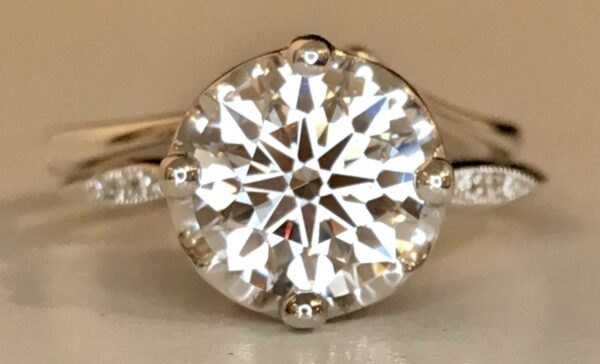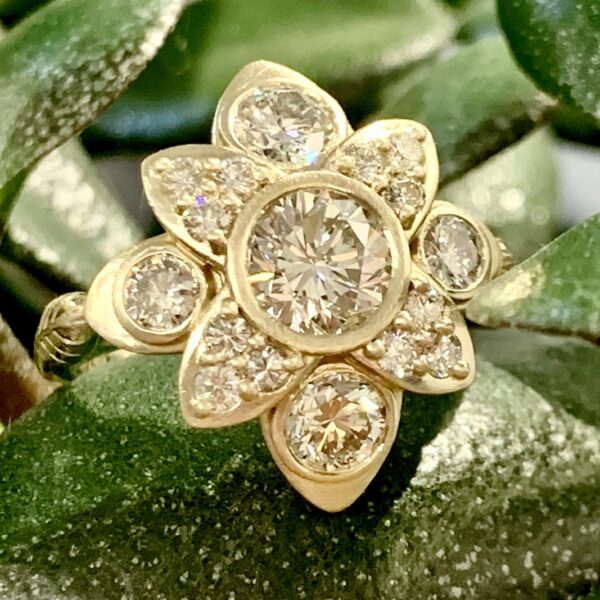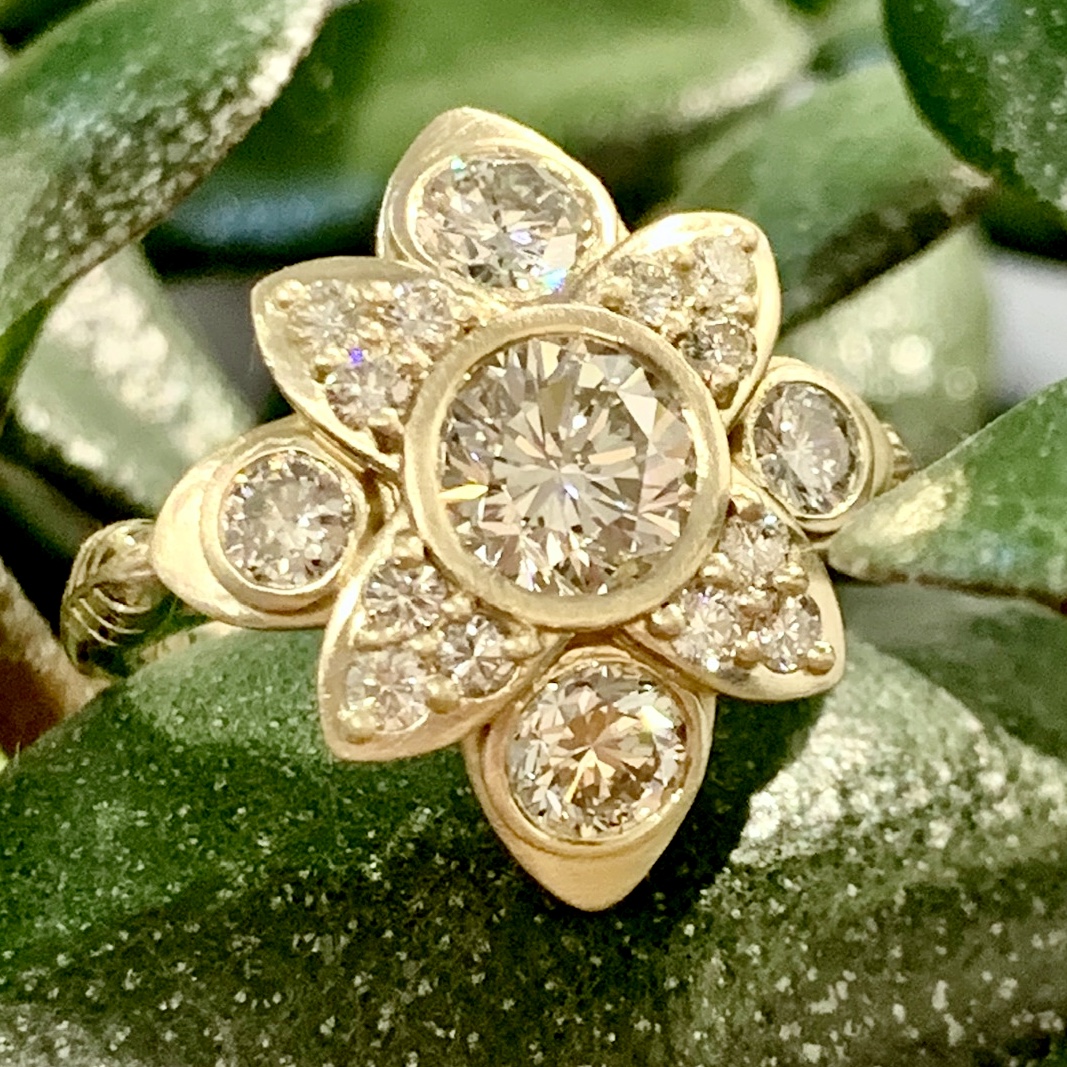What makes a diamond beautiful? Why is a does cutting a diamond make it more beautiful than, say, a piece of ordinary glass cut to the same shape? There are multiple reasons, but let’s start with the idea that diamonds are beautiful at all. We love their sparkle and twinkle, their scintillation, their luminescence. We love their rarity and exclusivity.
Whenever a purchase is emotional, there’s an opportunity for someone to take advantage of the consumer. Buying, say, ten gallons of gas? Not an emotional decision, even if the price itself pleases or offends you. Diamonds, like wedding dresses and homes, are emotional purchases. Playing to your emotions can greatly motivate you to spend more money, perhaps more than the item’s real worth.
The Four C’s of Diamonds
The GIA, the Gemological Institute of America, has been working to objectively evaluate and describe diamonds for almost a century, developing the “four C’s” used internationally today. You can get a quick tutorial on the four C’s on our website. These standardized descriptors should, in theory, lead to a diamond being sold based on its commodity value.
Finding a way to make folks pay more for things is “the American way,” and this tendency is alive and well in our industry. Getting the consumer to overlook the diamond’s grading descriptors and buy based upon emotion requires an aggressive campaign to overcome clients’ existing anxiety about overpaying.
Let’s consider an example. One diamond specialty website says that they are, “selling diamonds that have undergone a proprietary technique in which micro-grooves are cut into the lower pavilion of the stone.“It allows the light that would normally leave the bottom of the diamond to be sent back up through the table,” they explain. Is this possible? Not in a well-cut diamond.
The Tolkowsky Method

Around a century ago, a young Belgian mathematician named Marcel Tolkowsky derived what is today known as the ideal cut from mathematical calculations that considered both brilliance and fire of the stone. Tolkowsky found that if a diamond was cut too deep or shallow then light would escape out the sides or bottom of the diamond resulting in a loss of brilliance (white light reflected up through the top of a diamond), fire (colored light reflected from within a diamond), and sparkle (combination of fire and brilliance).
Does the bottom of the diamond produce light?
Back to our question: the reason why a diamond is so much more beautiful than a piece of glass cut to the same shape comes down to its refractive index, meaning how the substance bends light. A well cut diamond is cut such that all the light entering through the table and the crown is bounced around inside the stone, and back out the top to your waiting eye. So, the specialty retailer’s claim that their microgrooves capture light that would otherwise leak out the diamond’s bottom doesn’t make sense, does it? No light should be leaking out the bottom of an ideal cut diamond.
Many of our clients also wonder if covering up the bottom of their diamond will make it less pretty, because they imagine that the light they’re seeing on the diamond’s top is coming up from below the stone. This isn’t true for a well cut round brilliant diamond–again, the light seen from the top is coming from the top.

This mistaken belief about light leads some consumers and retailers to avoid settings like bezels, which can be either vintage or modern, are always clean and elegant, and protect a diamond well.
The Most Important Factor
When it comes to the four C’s, no single factor is as important to sparkle as cut, and pursuing a properly cut diamond will allow you to set it anyway you like, and provide generations of beauty. For more information about cut, I’ve included an excerpt from our website below. A popular jewelry website says, “the setting you choose for your diamond can have a surprisingly large impact on how much it sparkles. For optimal brilliance and fire, choose a prong setting that allows light to enter into the diamond from every angle …bezel settings, which cover part of the surface of the diamond, are best avoided, as they can block light from entering into the diamond and reflecting off of its facets.” Here’s a beautiful bezel set ring that certainly isn’t having any light blocked!
Cut is about so much more than shape! The word, “cut” can be used loosely to refer to the diamond’s shape, meaning round or oval, princess, pear, etc. But when it comes to diamond beauty, we’re talking about cut from a mathematical perspective.This is a good time to mention something called refractive index, which is a way to measure how light moves through a substance. Diamonds have a very high refractive index relative to other materials, which is what makes them so darn sparkly. The refractive index of diamonds is higher than that of white sapphire or quartz or glass, which is why a little piece of diamond cut the right way can make us so happy.
So what do cut and refractive index mean to you, the shopper? In order to maximize the “sparkle potential” of a diamond’s high refractive index, it needs to be cut according to some good math. Little details like the percentage of the total diameter of the diamond made up by the table (the table is that flat area on the stone’s top surface), or the depth of the pavilion relative to the total depth of the stone make a huge difference in sparkle.
If you have no idea what I’m talking about, that’s okay. Cut is complicated. So what you should know is this: overall cut is graded from “poor” all the way up to “ideal.” We tend to avoid poor or fair cuts, and try to remain at “very good” or better, because we know that cut is going to be a diamond’s make-or-break beauty secret. You want brilliance and fire, and cut is essential to that goal.
Still have questions? Give us a call or stop in the shop!


